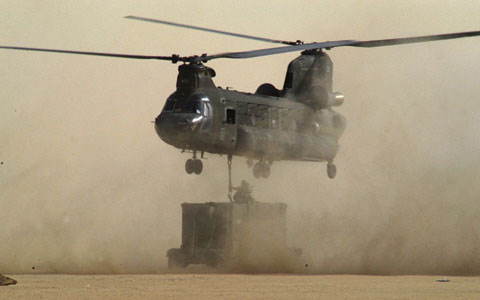Honeywell is using technology developed for its synthetic vision system to help pilots “see” through Iraqi sand and dust storms.
The Sandblaster system for US military helicopters will help pilots land in the brownout conditions that are wreaking havoc on operations in the Middle East.
As a helicopter approaches the ground, dust blown up by the rotor blades obscures the pilot's view of the landing zone. The end result, while not making the news headlines, is accounting for three-quarters of all coalition helicopter accidents in the region. Since 1973, there have been about 30 aircraft brownout mishaps due to blowing dust and debris.

The US Defense Advanced Research Projects Agency (DARPA) awarded the 18-month Sandblaster programme to Sikorsky, with Honeywell selected for the $6.9 million synthetic vision programme.
Ed Wheeler, Honeywell’s president of defence and space, says: “The system will provide an in-cockpit view of the outside world and I think it is a very significant safety enhancement.
“At the moment the contract is about proving the concept. Once that’s done, Sikorsky will go about fitting it to their aircraft and I imagine the Army will put out RFPs for retrofits too.”
Honeywell has been looking at millimetre wave technology and has already settled on an IR sensor as a major component. It will also provide a database based on digital terrain elevation data, similar to that used in the company’s Enhanced Ground Proximity System (EGPWS).
“The system will take the sensor inputs and fuse that with the terrain data to give the pilot a composite view of the outside world,” Wheeler says.
Sandblaster is divided into three six-month phases - component fabrication, integration and evaluation - and is planned to end in September 2008.
Source: Flight International
















